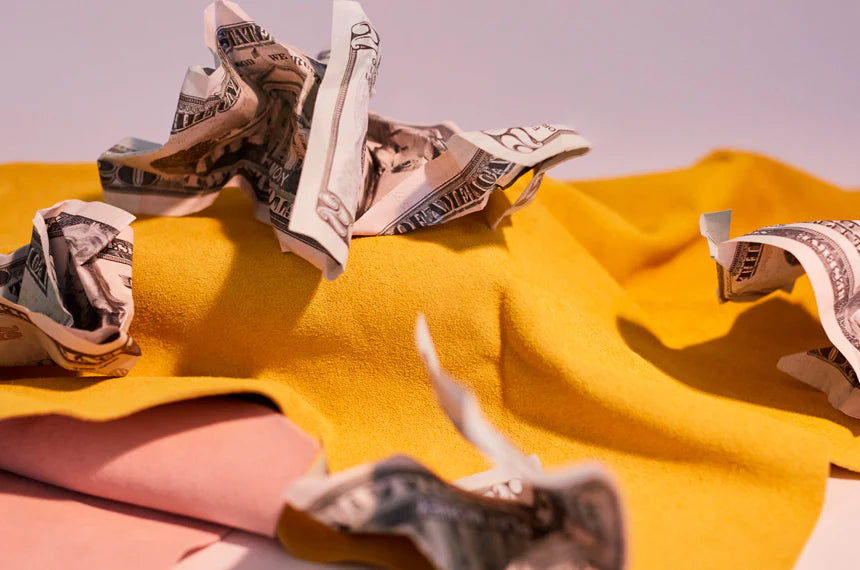In 2017, for the first time since the American Psychological Association started surveying people a decade prior about their stress levels, “the future of the nation” surpassed money as the most stress-inducing issue, at 63 percent versus 62 percent. Gee, wonder what could’ve caused that shift.
Of course, this depressing statistic negates nothing about the true-ness of the below piece of content, courtesy of someone who identifies as “boof”:
wow things really do be costing money out here pic.twitter.com/rbr87ygitw — boof (@plantsforhire) February 28, 2017
The good news is that if you find this meme to be extremely relatable, and you know you’re your own worst enemy when it comes to indulging in habits you know are less than fiscally responsible, there are some surprisingly simple ways find at least a little bit of relief.
You’re spending a LOT on eating out. And Postmates. And Seamless.
First of all: Same. Sometimes I even put things in my Postmates cart with no intention of ordering anything, because I am manifesting my ideal future (shoutout to my mom for telling me what The Secret is about).
Eating out and ordering in is high on the list of things that bleed us dry, in part because it’s a cost that’s easy to justify — one needs food to order to live, after all. But one does not need to have a cheeseburger delivered to the front door because it’s drizzling outside.
There’s no shame in treating yourself, but in order to keep those habits from running amok, Shannon McLay, founder and president of financial planning company The Financial Gym, suggests integrating “no spend days” into your week, “just as you would schedule any workout class or exercise,” she says. This means scheduling one or two days a week where you spend zero dollars and prep all your meals at home.
It’s not license to spend recklessly on the other days, of course; in order to realize those savings, you’ll still need to exercise some measure of restraint through the rest of the week. But setting those firm boundaries for one or two days can translate into significant savings over time.
You can’t keep your mitts off your savings
Setting money aside to put in a savings account is hard enough. Keeping said money actually inthe savings account? Even harder. Pamela Capalad, financial planner and founder of Brunch & Budget, recommends circumventing the temptation of easy transfers between your savings and checking accounts by setting up an auto transfer from your checking account to a savings account at a different bank.
“I recently had a client do this and she said she never even thinks about the money anymore, because it just disappears from her checking account. I recommend a high yield savings account like Ally Bank, Amex Savings, or Marcus, so you can make a little bit of money on your savings, too.”
She adds that while apps like Qapital and Digit are great as “micro savings” accounts, they are only a viable means of saving if you leave the money in the account. In order to do that, you need to have a clearly defined notion of what that money is for.
“Is it your emergency fund? Travel fund? Shopping spree fund? Many people find themselves draining these accounts every one or two months because they didn’t set an intention for the money,” she says.
You’re spending money you don’t have
This might sound a tad dramatic, but here’s the thing about credit card companies: They want you to fail — or at the very least, they want you to spend more than you can afford so that you’re carrying a balance they can charge interest on every month. And while building credit as a consumer is necessary for down-the-line purchases like a car or a home, staying clear of debt that puts you underwater is easier said than done for a lot of us.
McLay recommends Debitize as a way to keep your credit card spending under control. “You can use your credit card, but your bank account is debited as if you used a debit card,” she explains, “so you don’t have to worry about runaway credit card debt and high interest rates.”
You’re passing over really simple opportunities to invest
Historically speaking, investing has been treated as the domain of men; it’s what Ellevest CEO Sallie Krawcheck refers to as the “investment gap,” and this lack of education and resources for women over time represents a staggering loss of equity and financial freedom.
But the times they are a’changin; in addition to platforms like Ellevest, millennial-facing companies focused on getting individuals to invest small sums have entered the market, making it vastly more accessible than it ever has been. “Many people think you need large sums of money to start investing,” says McLay, “but apps like Acorns or Stash, allow you to start investing without breaking the bank. Acorns can literally invest your change, while Stash allows you to start investing for as little as $5.”



